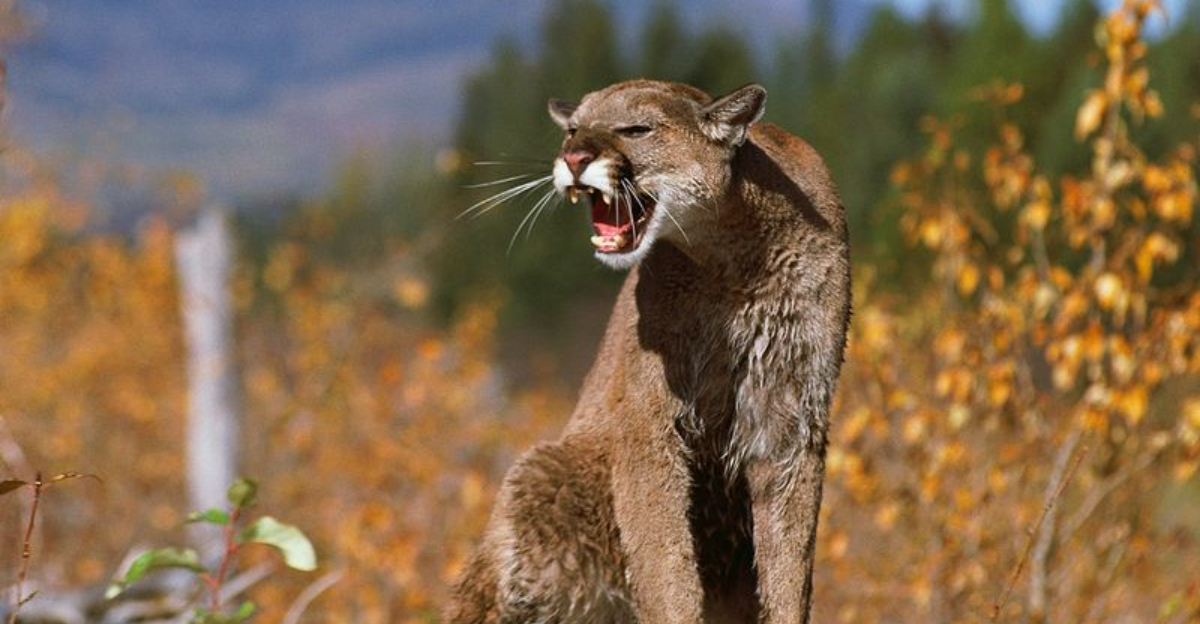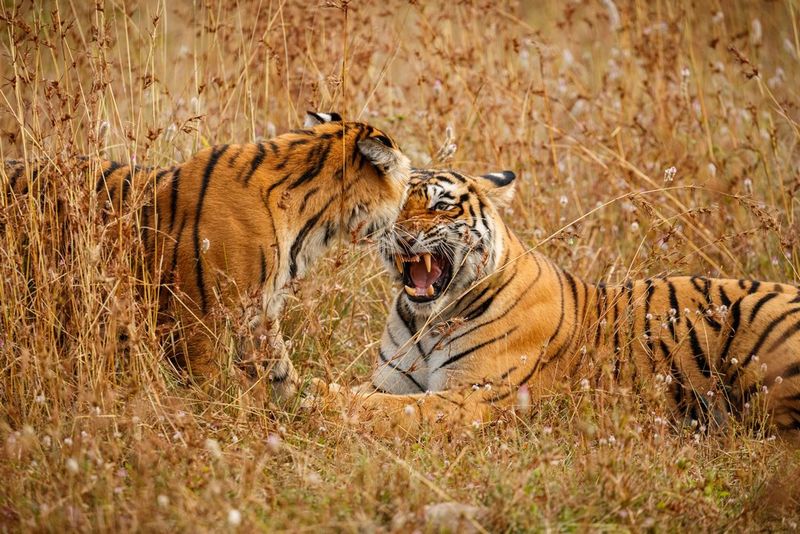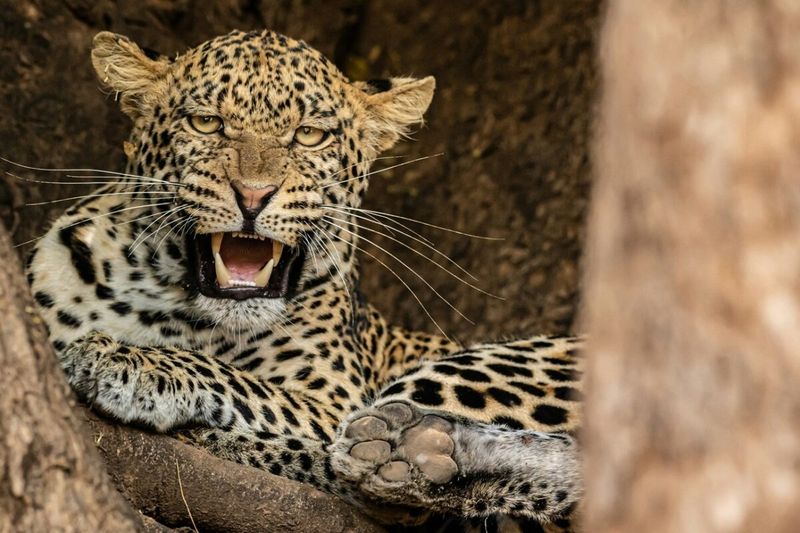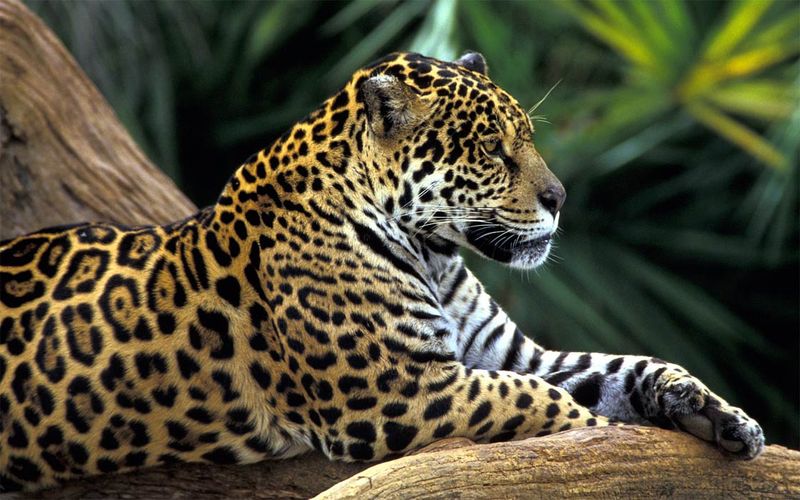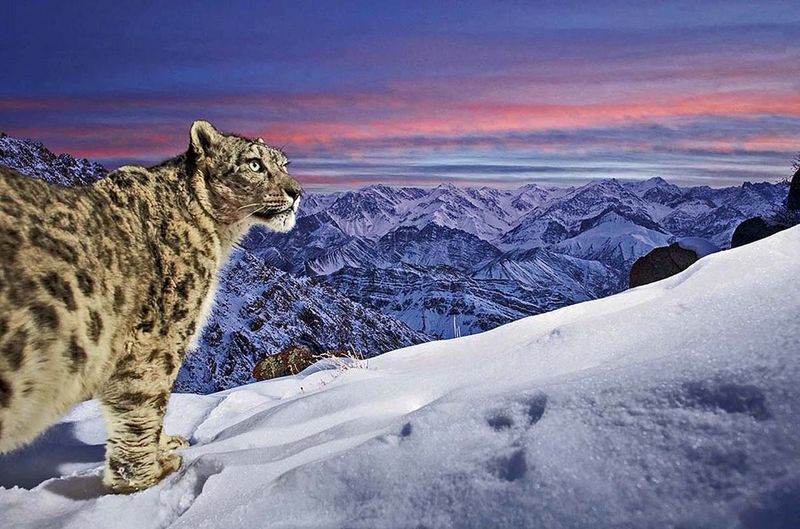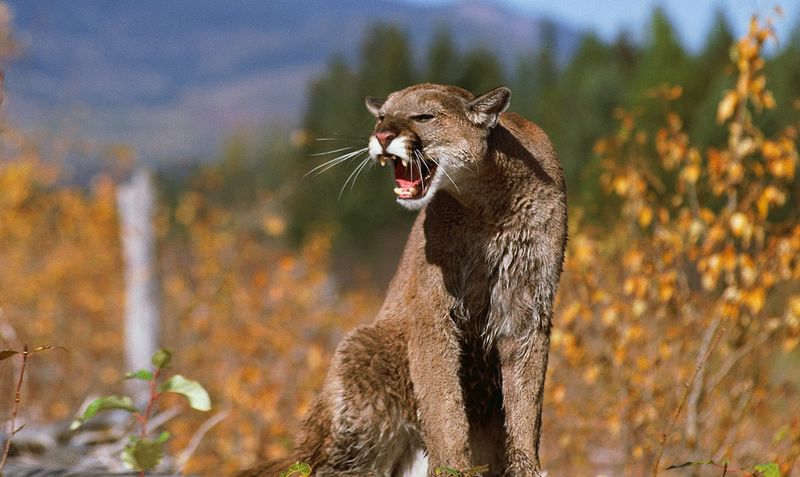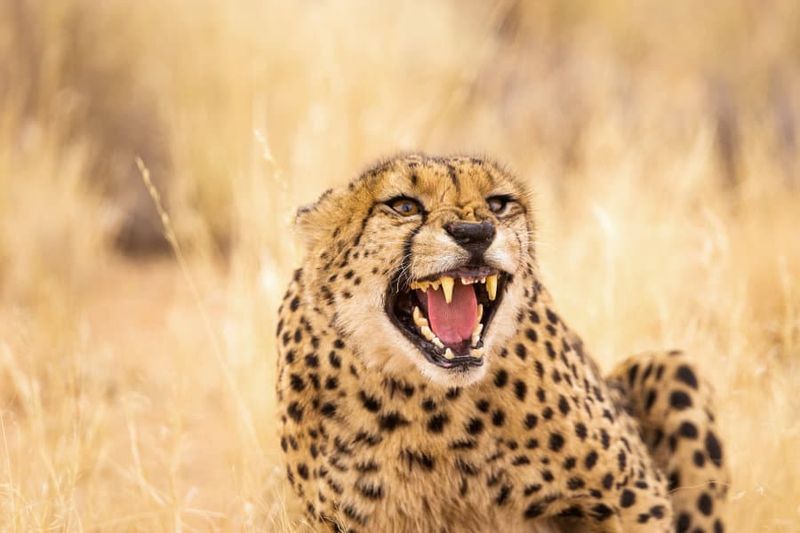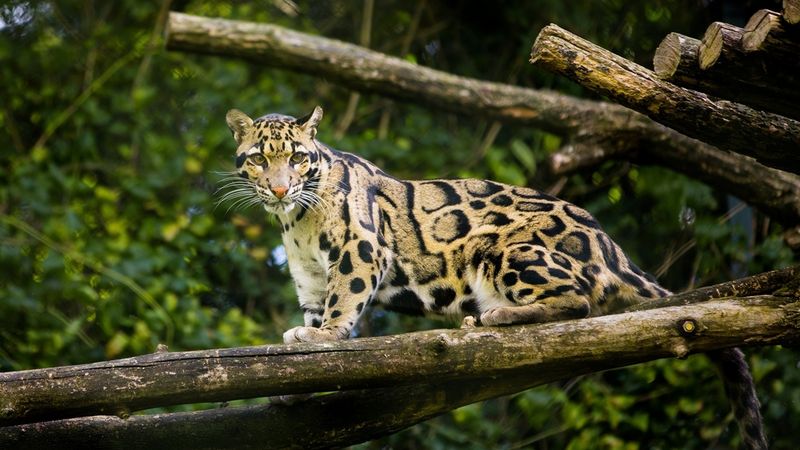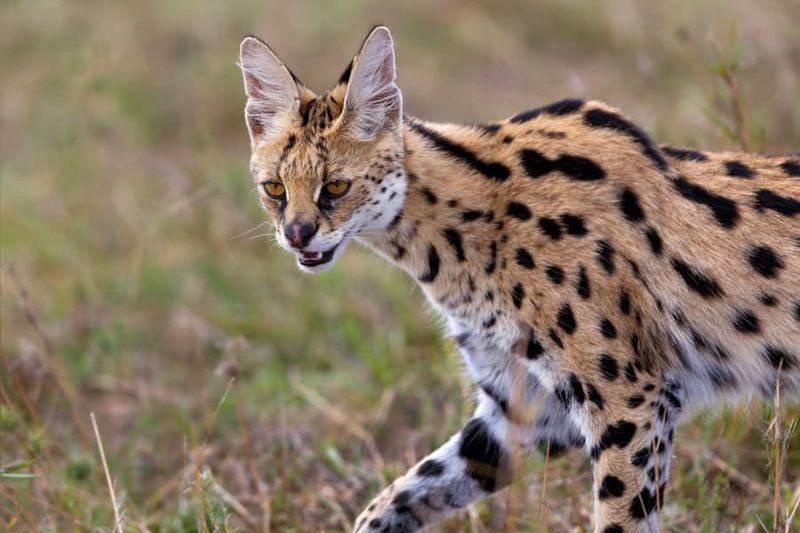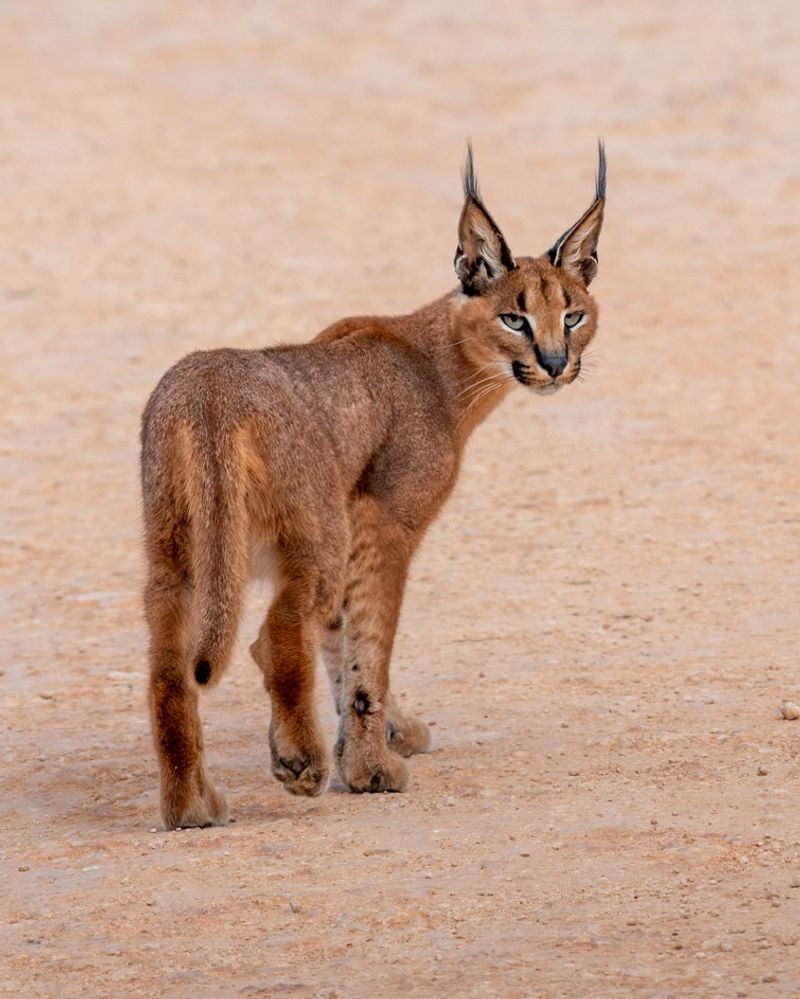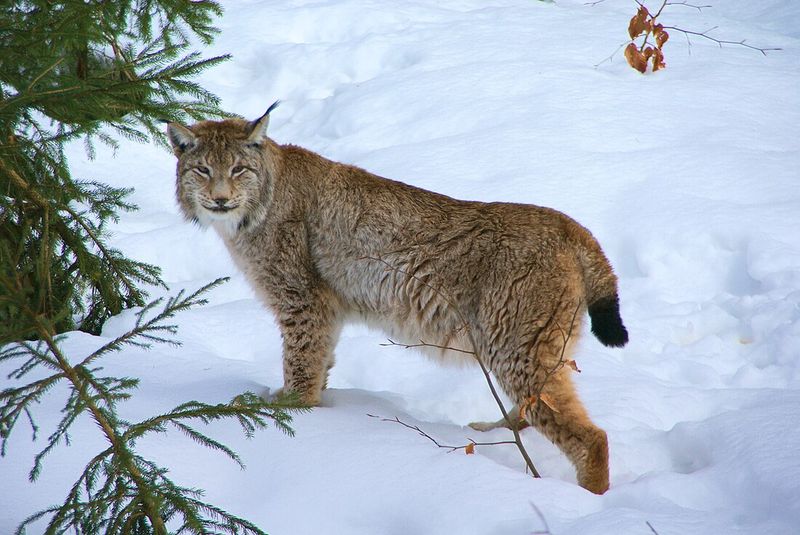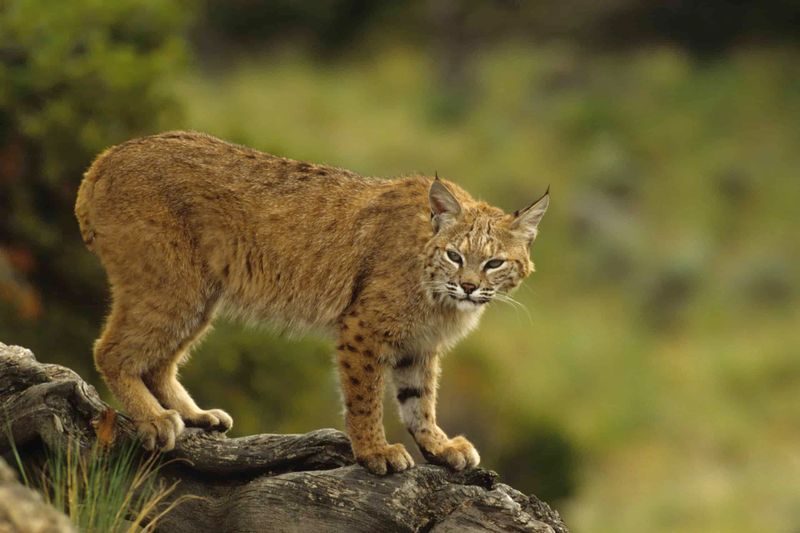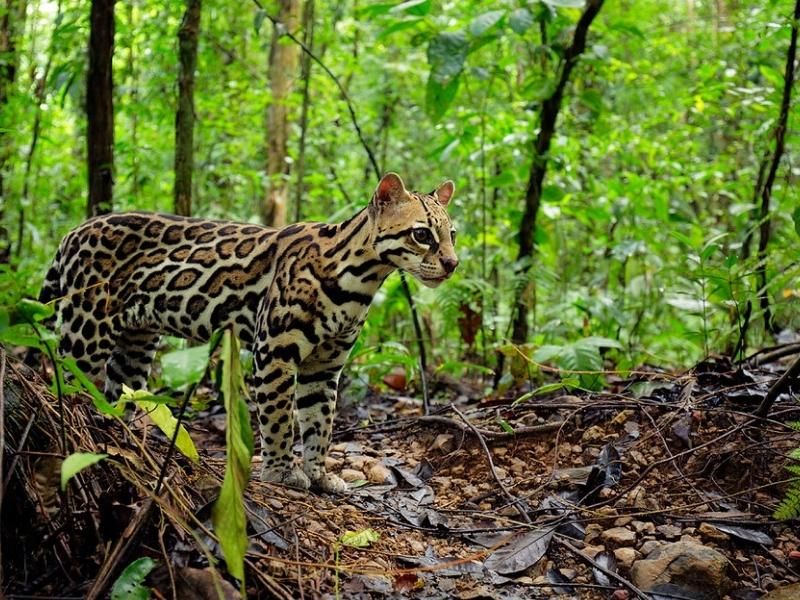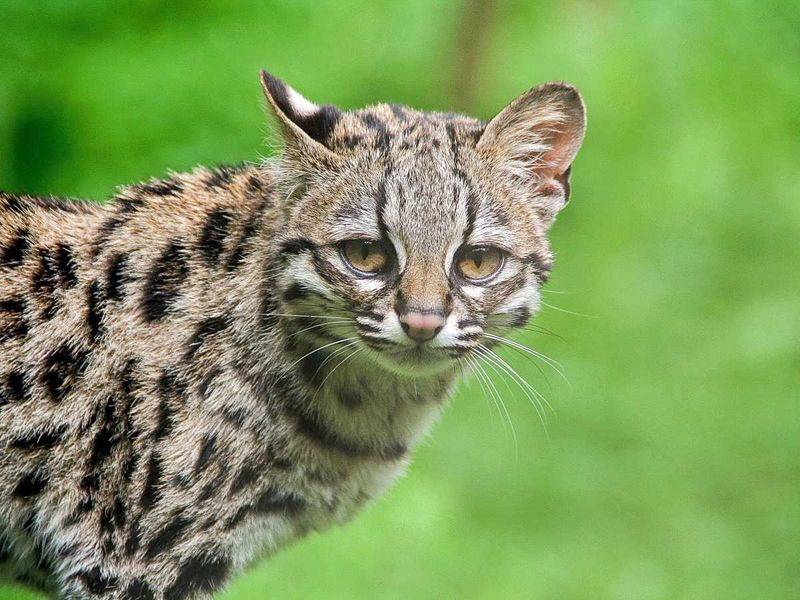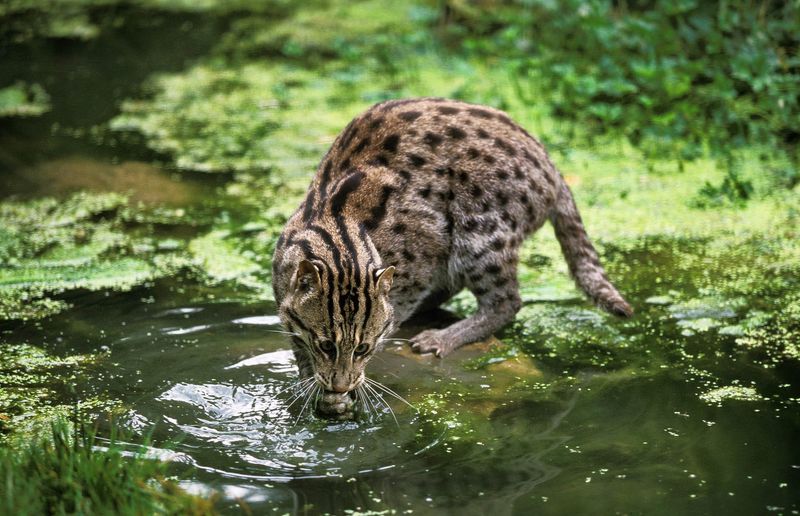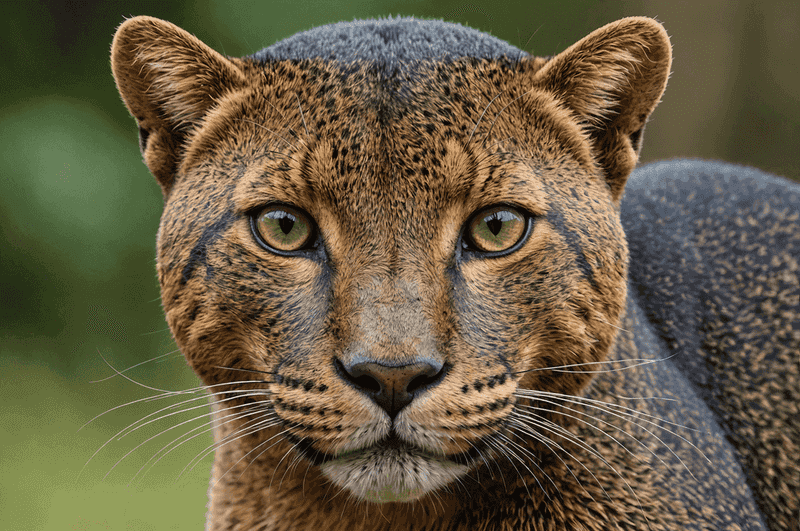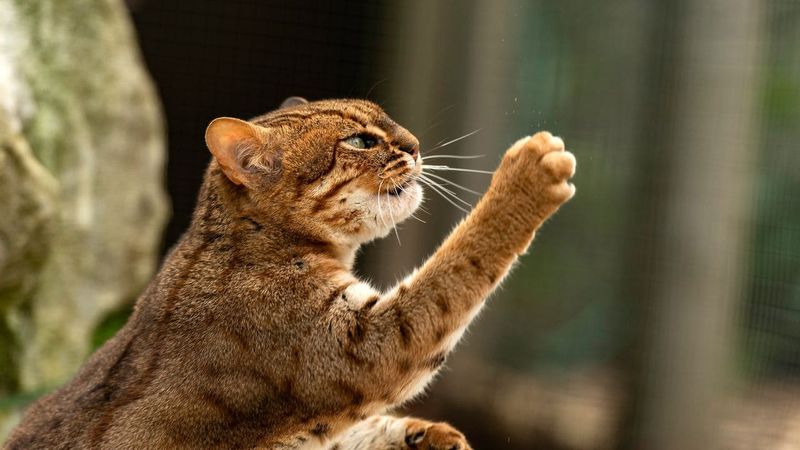📖 Table of Content:
When we think of big cats, the mighty roar of a lion often comes to mind first. But in the diverse world of felines, each species has developed its own unique vocal signature. From chuffing tigers to sawing leopards, these distinctive sounds help cats communicate, establish territory, and find mates in their natural habitats. Ready to discover how these magnificent creatures express themselves beyond the classic roar?
1. Tiger
Tigers communicate through a friendly ‘chuff’ or ‘prusten’ sound—a non-threatening vocalization that resembles a snorting puff of air. This gentle greeting helps them bond with family members and potential mates.
Unlike lions, tigers rarely roar except when threatened. Instead, they rely on scent marking and these low-frequency sounds that can travel through dense jungle foliage.
Female tigers use specialized vocalizations when calling to cubs, while males produce deeper, more resonant chuffs. These powerful cats can also growl, hiss, and snarl when displaying aggression, creating a diverse vocal repertoire beyond the stereotypical roar.
2. Leopard
The signature call of a leopard is a rough, sawing cough that sounds strikingly like a woodcutter at work. It’s most often heard echoing through forests and savannas after dark.
Males use this sound primarily during mating season to advertise their presence to females and warn off rival males. The intensity and frequency of sawing indicate the leopard’s size and dominance.
These secretive cats also communicate through soft meows, growls, and purrs. Their vocalizations tend to be quieter than other big cats, reflecting their stealthy nature and preference for avoiding confrontation when possible.
3. Jaguar
With the most powerful bite among big cats, jaguars also make forceful vocalizations: low, rhythmic grunts that resemble a steady “uh-uh-uh” sound echoing through the rainforest.
Unlike the continuous roar of lions, jaguars produce these grunt-roars in short bursts. The sound reverberates through jungle canopies, allowing these solitary hunters to maintain distance from each other.
Female jaguars use softer calls when communicating with cubs. During confrontations, they can also produce intimidating growls and snarls. Their vocal range includes purrs during relaxed moments, showing these fierce predators have a gentler side.
4. Snow Leopard
Unlike lions and tigers, snow leopards don’t have the physical ability to roar. They communicate with sharp yowls and distinctive “choo” sounds that carry over rocky Himalayan terrain.
During mating season, their calls intensify to a wailing meow that can be heard for miles in the thin mountain air. These solitary cats rarely encounter each other outside breeding times, making vocal communication crucial.
Scientists have recorded snow leopards purring, hissing, and growling like domestic cats but at lower frequencies. Their most unusual sound is a non-vocal communication method—tail-swishing against snow creates vibrations that may signal to nearby animals.
5. Cougar
Also known as mountain lions, cougars produce an eerie scream that has startled many hikers in the North American wilderness. This high-pitched, almost woman-like shriek serves as a territorial warning and mating call.
Female cougars use chirps and whistles to communicate with kittens, who respond with their own mews and purrs. These sounds help maintain contact in dense forests where visual cues might be limited.
Unlike true big cats, cougars belong to the small cat family and cannot roar. They compensate with an impressive range of vocalizations including growls, hisses, and a distinctive bird-like chirp that belies their large size and predatory nature.
6. Cheetah
Cheetahs break the big cat stereotype with their most distinctive vocalization—a high-pitched chirp similar to a bird call or a dog’s bark. This unique sound helps mothers locate cubs in tall savanna grasses where visibility is limited.
Males produce a melodic ‘stutter-bark’ during mating season that carries across open plains. The frequency and pattern of these calls signal their fitness to potential mates.
Unlike lions and tigers, cheetahs purr loudly when content, both while inhaling and exhaling. They cannot roar due to a different hyoid bone structure in their throats. Their vocal repertoire also includes hisses, growls, and a distinctive ‘aaaiii’ sound when threatened.
7. Clouded Leopard
Through the thick rainforest canopy, clouded leopards make deep moans and hisses, their most distinctive call a sustained moan that fluctuates in pitch.
These medium-sized cats lack the specialized throat structure for roaring. Instead, they produce a variety of cat-like sounds, including purrs, growls, and meows, but at deeper frequencies than domestic cats.
During breeding season, males emit short, repetitive calls to attract females. Mother clouded leopards use soft prusten sounds similar to tigers when interacting with cubs. Their vocalizations remain poorly studied due to their elusive nature and declining populations in Southeast Asian forests.
8. Serval
Known for their vocal variety, servals produce close to 20 different sounds. Their trademark is a sharp chirp that evolves into a lingering whine, useful for coordinating family hunts.
When threatened, servals produce a deep growl followed by a series of barks that can intimidate much larger animals. These slender cats use soft purrs and meows when interacting with kittens.
Their most unusual sound is a rapid clicking noise made with their tongues against their palates. This unique vocalization helps servals express excitement or frustration. Their large ears amplify sounds, making them exceptional listeners as well as communicators.
9. Caracal
Known for their barking meow, caracals produce a loud, sharp call that can both intimidate prey and signal territorial claims in dry environments.
During confrontations, caracals emit a series of rapid, staccato growls that intimidate rivals. These medium-sized cats use a softer, trilling purr when interacting with kittens or during courtship.
Their most unusual sound is a distinctive hissing spit that accompanies their famous ear-flattening defensive display. Though typically silent hunters, caracals become quite vocal during mating season with males producing repeated calling sounds throughout the night to attract females across their wide-ranging territories.
10. Eurasian Lynx
Eurasian lynx break the winter silence with powerful caterwauling during mating season. These haunting, wailing calls echo through northern forests and can be mistaken for fighting foxes or even human screams by unsuspecting hikers.
Males produce the loudest vocalizations, sometimes maintaining a calling session for hours to attract females. Their vocal repertoire includes deep growls, purrs, and meows similar to oversized house cats.
Mother lynx communicates with kittens through soft chirping sounds that signal safety or danger. During territorial disputes, these normally silent predators can produce intimidating screams that freeze prey in their tracks. Their specialized vocal adaptations carry sound efficiently through dense forest environments.
11. Bobcat
Mating season brings blood-curdling screams from bobcats that resemble both a child’s scream and an owl’s hoot, haunting the forests of North America.
Beyond screaming, bobcats communicate through a series of yowls, hisses, and growls. Their sounds vary dramatically in pitch and intensity depending on the situation, with aggressive encounters producing the loudest responses.
Female bobcats use gentle coos and chirps when calling to kittens. Despite their vocal capabilities, these adaptable predators hunt in silence, relying on stealth rather than intimidation. Their distinctive snarls serve as warning signals to potential threats including humans, coyotes, and larger predators.
12. Ocelot
The unique ‘yapping’ calls of ocelots are quick, sharp, and dog-like, allowing these cats to communicate effectively through dense jungle foliage.
During territorial disputes, ocelots produce deep growls and loud, throaty coughs that intimidate rivals. Their vocal range includes purrs, meows, and mutters that vary in intensity based on their emotional state.
Mother ocelots use soft murmur sounds when interacting with kittens, who respond with high-pitched mews. Despite their vocal capabilities, these spotted hunters prefer stealth, using body language and scent marking more frequently than vocalizations in their secretive rainforest lifestyle.
13. Margay
Margays possess an extraordinary vocal talent—they can mimic the calls of their prey. Researchers have documented these small wildcats imitating baby monkey distress calls to lure curious adults within striking distance.
Beyond this remarkable mimicry, margays communicate through chirps, purrs, and meows similar to house cats but with a wilder edge. Their most distinctive vocalization is a high-pitched wailing sound used during mating season that carries through dense rainforest canopies.
Mother margays use gentle chirruping sounds to guide kittens through treetop pathways. These primarily arboreal cats rely heavily on vocal communication when visual contact is limited by foliage, developing more complex calling patterns than many ground-dwelling felines.
14. Fishing Cat
When near water, fishing cats produce a distinctive chuckling call that resembles quick, bubbly laughter, possibly used to communicate or distract prey.
During breeding season, males emit loud, repetitive howls that carry across marshy habitats. These water-loving felines also communicate through growls, hisses, and meows similar to domestic cats but with deeper resonance.
Mother fishing cats use soft chirping sounds to guide kittens during swimming lessons. Their wetland habitat has shaped their vocal adaptations, with sounds that carry effectively over water surfaces. Despite their specialized fishing adaptations, their vocalizations connect them to their feline relatives.
15. Jaguarundi
Jaguarundis break the silence with bird-like chattering sounds unlike any other wild cat. Their vocal repertoire includes 13 distinct calls ranging from purrs and whistles to chirps and screams, making them surprisingly talkative for solitary hunters.
The most unusual jaguarundi vocalization is a soft warbling sound used during courtship. Males produce this gentle, almost musical call to approach females without appearing threatening.
These sleek cats communicate danger through sharp, piercing screams that warn others of potential threats. Young jaguarundis develop specialized contact calls to maintain connection with mothers while learning to hunt. Their diverse vocalizations reflect their adaptability across various habitats from rainforests to scrublands throughout Central and South America.
16. Rusty-Spotted Cat
The vocalizations of rusty-spotted cats are squeaky and very high-pitched, often compared to bird calls rather than normal cat meows.
During territorial disputes, these miniature wildcats can produce surprisingly loud growls and hisses that belie their small size. Their vocal range includes purrs, chirps, and trills used during social interactions.
Mother rusty-spotted cats communicate with kittens through soft churring sounds similar to purrs but at higher frequencies. Despite being the world’s smallest wild cat species, they compensate for their size with an impressive vocal range that helps establish territory in their forest habitats across India and Sri Lanka.
